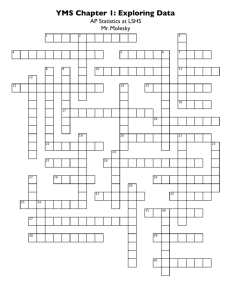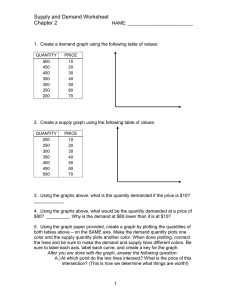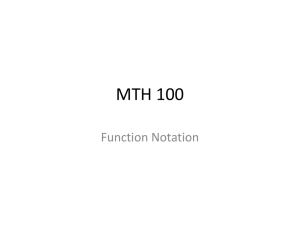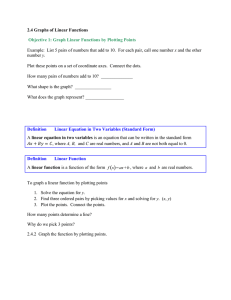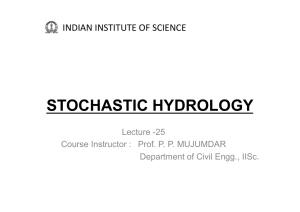Exploring & Visualizing
advertisement
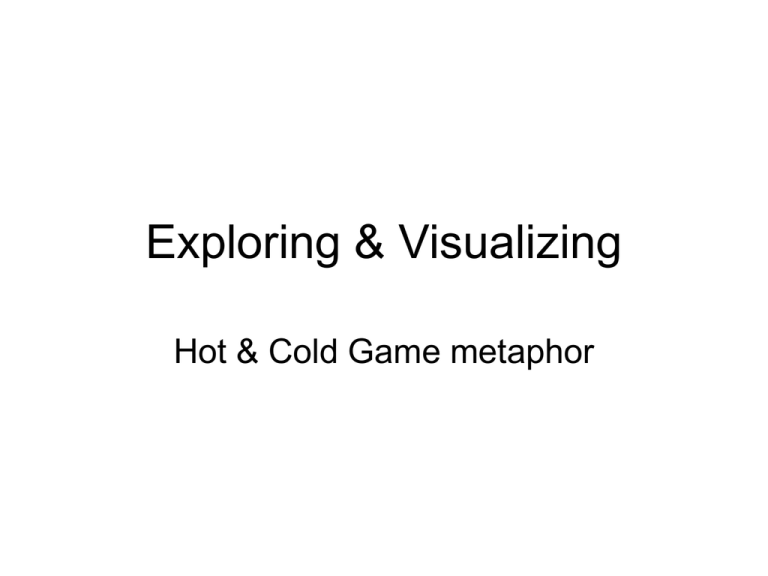
Exploring & Visualizing Hot & Cold Game metaphor Picture as exploration • Most of the polynomiography methods are based on root-finding • Roots themselves however present little interest • The important part is the process of rootfinding rather than result The standard algorithm • Every point in the plane is assigned two numbers: speed of convergence and root index • The two numbers are later transformed into a color Speed of convergence • Pick up a point in the plane • Iterate it (repeatedly apply a certain procedure) • Stop based on some criterion • Record how many times you did That’s number of iterations = speed of convergence Root index • Polynomials, or functions in general, typically have more than one root • The root index is a whole number recording to which root we arrived = our final destination Coloring Algorithm • Typically the root index determines the color of the point (red, green, blue, etc) • The speed of convergence (number of iterations) determines the hue of the color • [some quick example with the software demonstrating where a point converges and how fast] Math is difficult, painting – not • Difficult part: iterating points and computing the two numbers for every point we want to paint • Easy part: Reassigning color for the two given numbers • [example in the software showing that recoloring takes much faster than recomputing and examples of coloring] Typical Results • Smooth parts = continuity areas • Fractal = difficult = interesting areas Goals • Predict the fractal parts without too much computing • Possibly suggest some root-estimating or root-proximity methods (as opposed to root-finding methods) • Get cool pictures in the process! • [end of introduction] Root = object we seek • When we are at the root, we know it • Even when not at the root we know if we’re close or not • Use |p(x)|, the absolute value (norm) of the polynomial computed at point x • Norm = absolute value of the polynomial = temperature Game of Hot and Cold • • • • • • • Hide an object (root) Search for it (algorithm) Follow hints (numerical data) Hot = you are close Cold = you are far Warmer = you are getting closer Colder = you are moving away from it Bridge between continuous and fractals • Smooth and continuous • Fractal and discontinuous Method 1: Plotting • Follow the analogy with the temperature • Plot the “temperature” = absolute value of p(x) over the given two-dimensional area • Temperature map with red areas around the roots (hot) and white (cold) areas with high values of p. Method 1: Picture Game-to-Math Dictionary • A (big!) house with objects hidden inside • Our search strategy • Hidden objects • Where we are • Our next position • Temperature at where we are • … at where we’ll be • Polynomial p(x) • Iteration function • Roots • x • p(x) • p(φ(x)) Method 2: Peeking and plotting • If I enter that room: will it be hot or cold? • Instead of plotting the temperature at where we are, we plot at where we will be • Plotting |p(φ(x))|. • If it is good a point and good searching strategy, φ(x) will be close or closer to a root Peeking: Picture Method 3: Relative • If I enter that room: will it be hotter or colder? • Plots relative increase or decrease in temperature • Plotting | p( ( x)) | | p( x) | Relative plotting Method: Decreasing sequence • Traditionally we look at the sequence xi+1 = p(φ(xi)) • Terminate it when we’re close to a root • In this method, we terminate the sequence when we’re going away from the root (measured by |p(x)|) • Stopping at your destination vs stopping when we hit dead end Decreasing sequence: Picture
